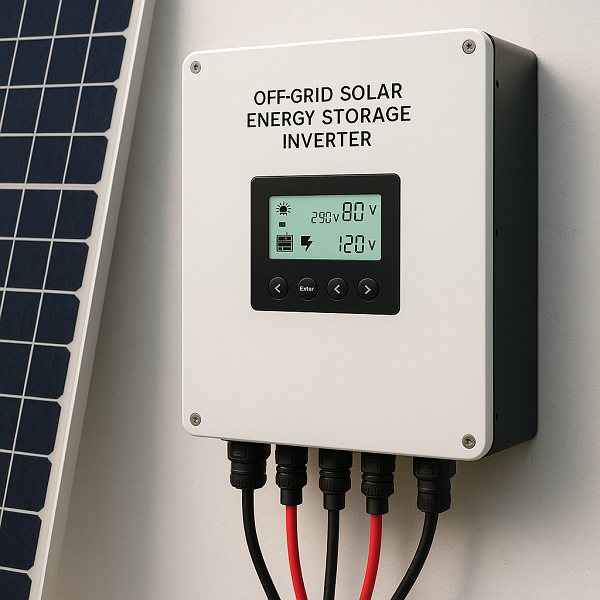Off-grid solar systems are becoming increasingly popular among homeowners, explorers, and rural communities as the demand for sustainable and independent energy solutions continues to grow. At the heart of these systems is a key component, the off-grid solar energy storage inverter. This device is the hero behind the scenes, enabling people to live and operate independently of the traditional utility grid while still enjoying reliable power.
What is an off-grid solar energy storage inverter?
An off-grid solar energy storage inverter is a specialized device that performs two basic functions:
- Inverter: It converts the direct current (DC) generated by the solar panels and stored in the batteries into alternating current (AC) to power most household appliances and tools.
- Energy Management: It manages the flow of energy between the solar panels, the battery bank, and the electrical loads to ensure safe and efficient operation.
Unlike grid-connected inverters, off-grid inverters are designed to work independently of any external power source, making them the cornerstone of remote energy systems.
Key components of an off-grid solar system
To better understand the role of the inverter, it is important to view it in the context of a complete off-grid system:
- Solar panels: capture sunlight and convert it to DC power.
- Charge controller: regulates the voltage and current from the solar panels to safely charge the batteries.
- Battery bank: stores excess solar energy for use at night or on cloudy days.
- Off-grid inverter: Converts stored DC power into usable AC power, often with integrated energy management features.
- Load: Appliances and devices that consume electricity.
Points to consider when choosing an off-grid inverter
Consider the following characteristics when choosing an inverter for your off-grid solar installation:
- Pure sine wave output: ensures compatibility with sensitive electronic equipment.
- Battery compatibility: Must support the type of battery you choose (e.g., lithium-ion, lead-acid).
- Power rating (watts): Choose an inverter that meets or exceeds your peak load requirements.
- Surge capacity: Ability to handle short periods of high load demand, which is especially important for equipment with motors (e.g., refrigerators, pumps).
- Built-in charger: Some inverters include an integrated battery charger that can be used in conjunction with a standby generator.
- Monitoring and connectivity: Advanced inverters offer mobile apps or web-based terminals for monitoring performance and battery status.
Advantages of off-grid solar inverters
- Energy independence: No need to rely on utilities to operate.
- Sustainability: Reduce your carbon footprint with renewable solar energy.
- Reliability: Maintain power during blackouts or in areas without grid access.
- Scalability: The system can be expanded to meet your energy needs.
Use Cases
- Remote cabins and homesteads
- Motorhomes (RVs) and boats
- Disaster preparedness
- Agricultural facilities
- Developing regions with limited infrastructure
An off-grid solar storage inverter is more than just a technical component - it's the gateway to energy independence. Whether you're looking to power a remote cabin, become self-sufficient, or simply reduce your dependence on traditional utilities, understanding and choosing the right inverter is critical to building a reliable, efficient, and sustainable solar power system. As solar technology continues to advance, off-grid inverters are becoming smarter, more efficient and easier to use, opening new doors for those seeking the freedom of clean energy.































